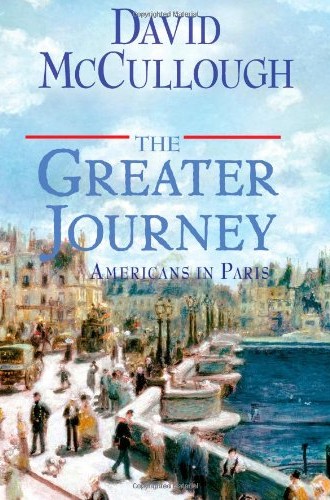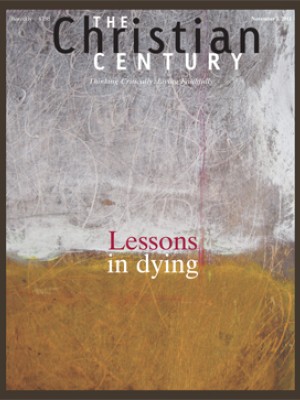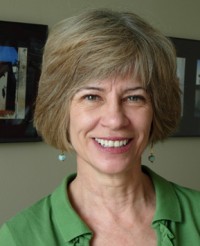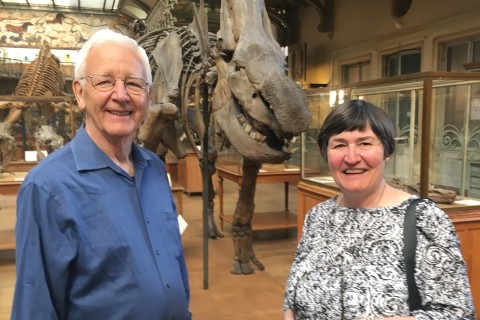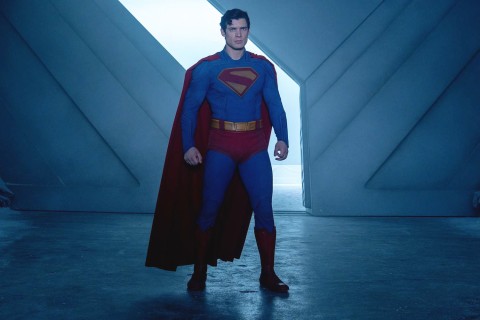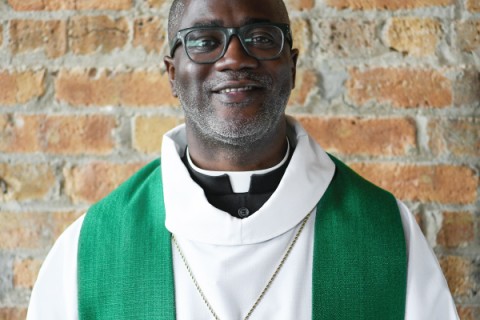The Greater Journey, by David McCullough
In the 1830s most Americans were finding plenty of adventure in their own country. It was just over 50 years old, after all. Some were trudging along the new Oregon Trail; some were pushing Native Americans west of the Mississippi with legislation or guns; others were involved in increasingly volatile arguments over slavery.
But not all Americans were thinking about America. Dozens of young adults were heading east instead of west, across the Atlantic Ocean to France. David McCullough immersed himself in their letters, diaries, lectures and memoirs and has shaped the material into a fine popular history of both individual travelers and the French era that they sailed into.
Read our latest issue or browse back issues.
As McCullough's editor, Michael Korda, said in a USA Today interview, McCullough is "driven by stories and by people, not just facts." The result is rich storytelling, with engaging short biographies that are part of a larger narrative of Paris as experienced between 1829, when painter and inventor Samuel Morse crossed the ocean, and 1900, when Paris hosted the Exposition Universelle of 1889.
In many cases the young Americans were aspiring nurses and doctors. Jonathan Mason Warren, Oliver Wendell Holmes Sr., Elizabeth Blackwell and others wanted formal medical training—and the center for training was Paris. Warren later performed some of the first successful operations using ether; Holmes became a professor and the dean at Harvard Medical School; Blackwell founded an American hospital staffed by women.
Others were artists. Samuel F. B. Morse, Mary Cassatt, John Singer Sargent and Augustus Saint-Gaudens were drawn to Paris seeking inspiration, nurturing of their art and mentors who could help them establish their careers.
Writers came too. James Fenimore Cooper, who was America's most famous author at the time, was followed by Mark Twain, Henry James and Harriet Beecher Stowe.
The Americans' knowledge of France and the French was meager, but they cherished the Marquis de Lafayette for his role in America's independence, and in 1830 they waved the French flag in New York to celebrate the July Revolution, which put "citizen king" Louis-Philippe in power (the next revolution was only 18 years away). Many of the Americans had studied Voltaire, Racine and Molière, but most knew little more of France. Some of their parents—especially the Calvinist families of Morse and Holmes—worried about the notorious licentiousness of Paris. The travelers were less worried.
In 1830 the journey to Paris was grim. Steamboats existed but were not yet ready for ocean travel. It took four to six weeks to cross the Atlantic, and travelers were aware of ships that had been destroyed by storm or iceberg, including the Crisis, an aptly named ship that disappeared en route to the continent. Arriving on the French coast, the Americans were often startled and offended by strict searches of their persons and their baggage by strangers who could not speak English.
But they were even more shocked when the carriage conductor shouted "Voilà Paris!" and they stepped out into the reality of Paris neighborhoods with their medieval tenements tilting toward filthy streets ("mud of an intensity that defies competition," said Holmes), the unremitting squalor and disease, a healthy and visible rat population, and the clamor of perpetual pedestrian and animal traffic through ancient, narrow passageways. (Georges-Eugène Haussmann would not begin clearing out the medieval neighborhoods and creating the city's broad boulevards until the 1850s.)
Once they'd found a garret to rent and a teacher or two, the young Americans adjusted quickly. Aspiring doctors and nurses gained permission to study at the new École de Médecine, where they were fascinated by lectures on dozens of topics. There were only 21 medical schools in the United States, each with a staff of only five or six professors; aspiring doctors more often apprenticed themselves to practitioners. At the École, enrollment sometimes rose to 5,000, and students could accompany doctors on their rounds and observe surgeries (most surgery patients died as a result of infection).
The aspiring artists were stunned, and sometimes shocked, by French openness toward art. The public swamped the museums on Sundays, and women as well as men were present, many of them diligently making copies of the great works.
Several stories within McCullough's larger story are especially engrossing. One is the biography of Saint-Gaudens, who sailed for Paris with a hundred dollars at the age of 19 and toiled relentlessly to create a sculpture of Abraham Lincoln for Chicago, the Amor Caritas for New York's Madison Square Garden and the Shaw Memorial for Boston.
Another story is that of American minister to France Elihu B. Washburne, who was scorned by many in the U.S. as unfit for his role but who earned respect for his courage and level-headedness. During the 131-day siege of Paris by the Germans in 1871, more than 65,000 people died, many of hunger. Washburne considered it his duty to stay in Paris through this most difficult and frightening of times and to extend such aid and advocacy as he could.
In spite of the madness, travel hardships, homesickness and vocational failures, most of those who went to Paris fell in love with the city. The joie de vivre that draws the world to Paris today seems to have begun with the young adults who arrived beginning in the 1830s and said, in the words of artist Robert Henri, "Paris! We are here. . . . We feel our speechlessness keenly." The cultural appreciation of dining, the elegance and accessibility of public parks and museums, the fascination with architectural and artistic riches—all of these were absorbed by the Americans, who took their enthusiasm and new knowledge home to share.
Their careers progressed, stalled or took detours (Morse's painting career is barely remembered; his telegraph was a transatlantic sensation), but none of them ever forgot the influence of Paris. "There are few things bought with money that are more delightful than a French breakfast," wrote Nathaniel Parker Willis as a correspondent for the New York Mirror. "At last I have come into a dreamland," said Stowe. Cassatt, whom Edgar Degas invited into the Impressionist circle, said of her time in Paris: "I began to live." Meanwhile, Americans back home would soon begin to hear of the travelers' inspiring contributions and accomplishments: the establishment of the world's finest medical training centers, an expansive portfolio of American art and literature and a golden era of invention.


